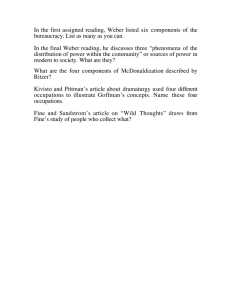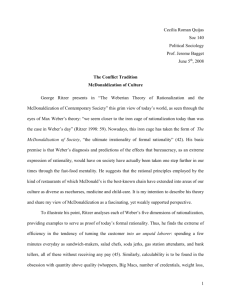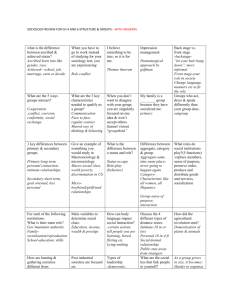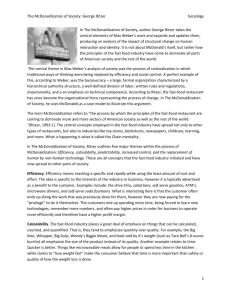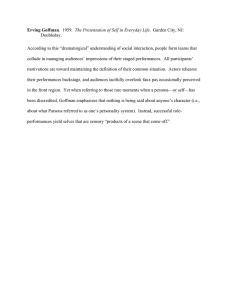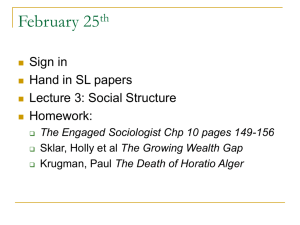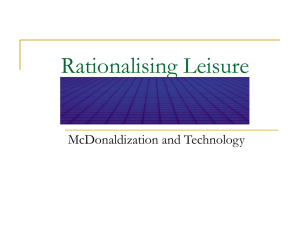Sociology 401 Test #2 Review Sheet
advertisement
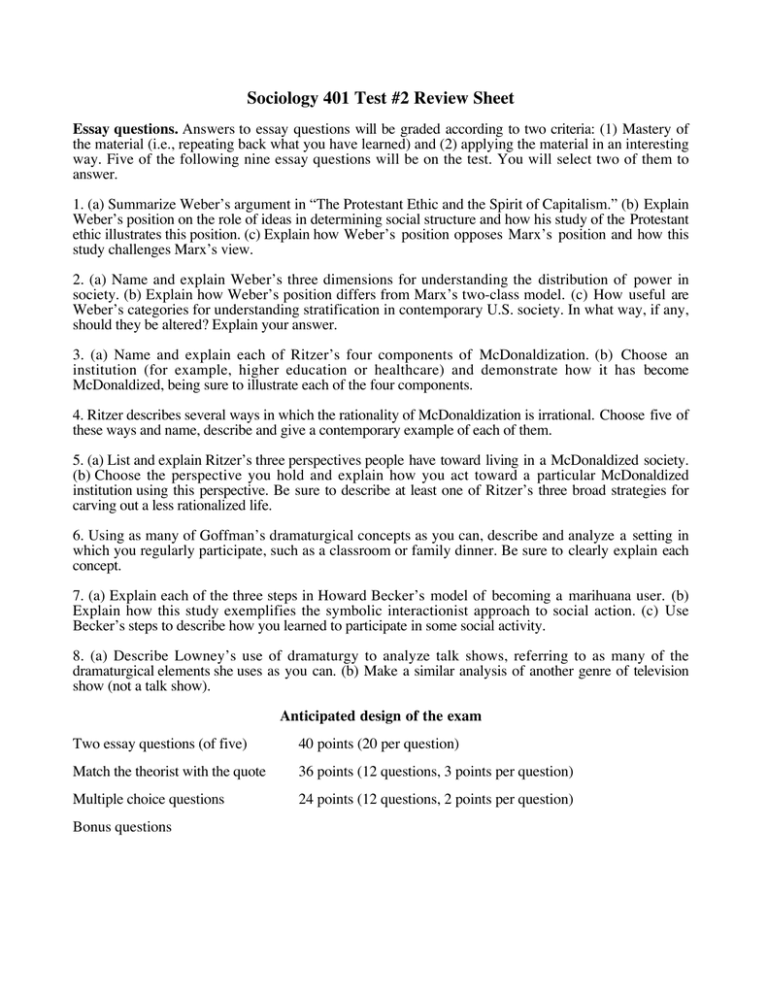
Sociology 401 Test #2 Review Sheet Essay questions. Answers to essay questions will be graded according to two criteria: (1) Mastery of the material (i.e., repeating back what you have learned) and (2) applying the material in an interesting way. Five of the following nine essay questions will be on the test. You will select two of them to answer. 1. (a) Summarize Weber’s argument in “The Protestant Ethic and the Spirit of Capitalism.” (b) Explain Weber’s position on the role of ideas in determining social structure and how his study of the Protestant ethic illustrates this position. (c) Explain how Weber’s position opposes Marx’s position and how this study challenges Marx’s view. 2. (a) Name and explain Weber’s three dimensions for understanding the distribution of power in society. (b) Explain how Weber’s position differs from Marx’s two-class model. (c) How useful are Weber’s categories for understanding stratification in contemporary U.S. society. In what way, if any, should they be altered? Explain your answer. 3. (a) Name and explain each of Ritzer’s four components of McDonaldization. (b) Choose an institution (for example, higher education or healthcare) and demonstrate how it has become McDonaldized, being sure to illustrate each of the four components. 4. Ritzer describes several ways in which the rationality of McDonaldization is irrational. Choose five of these ways and name, describe and give a contemporary example of each of them. 5. (a) List and explain Ritzer’s three perspectives people have toward living in a McDonaldized society. (b) Choose the perspective you hold and explain how you act toward a particular McDonaldized institution using this perspective. Be sure to describe at least one of Ritzer’s three broad strategies for carving out a less rationalized life. 6. Using as many of Goffman’s dramaturgical concepts as you can, describe and analyze a setting in which you regularly participate, such as a classroom or family dinner. Be sure to clearly explain each concept. 7. (a) Explain each of the three steps in Howard Becker’s model of becoming a marihuana user. (b) Explain how this study exemplifies the symbolic interactionist approach to social action. (c) Use Becker’s steps to describe how you learned to participate in some social activity. 8. (a) Describe Lowney’s use of dramaturgy to analyze talk shows, referring to as many of the dramaturgical elements she uses as you can. (b) Make a similar analysis of another genre of television show (not a talk show). Anticipated design of the exam Two essay questions (of five) 40 points (20 per question) Match the theorist with the quote 36 points (12 questions, 3 points per question) Multiple choice questions 24 points (12 questions, 2 points per question) Bonus questions Important ideas to know Everything from assigned readings or lecture is fair game for the test. Pay special attention to the class overheads, which are available on the class web site. Here are some concepts with which you may want to be familiar: Max Weber The Protestant Ethic and the Spirit of Capitalism Class, status and party Objectivity in Social Science and Social Policy Bureaucracy George Ritzer Elements of McDonaldization Three perspectives on a McDonaldized society Irrationality of rationality Strategies for carving out a less rationalized life Globalization, grobalization, glocalization, something, nothing George Herbert Mead The self and its development The generalized other “I” & “me” Herbert Blumer’s Symbolic Interaction, including the three premises given in class Howard Becker’s “Becoming a Marihuana User” Erving Goffman’s dramaturgical perspective Schweingruber’s research on engagement proposals Kathleen Lowney’s Baring Our Souls Dramaturgical elements of talk shows Recovery rules The Kivisto Readings Fine and Sandstrom’s “Wild Thoughts” Kivisto and Pittman. “Goffman’s Dramaturgical Society” Roots of recovery religion
